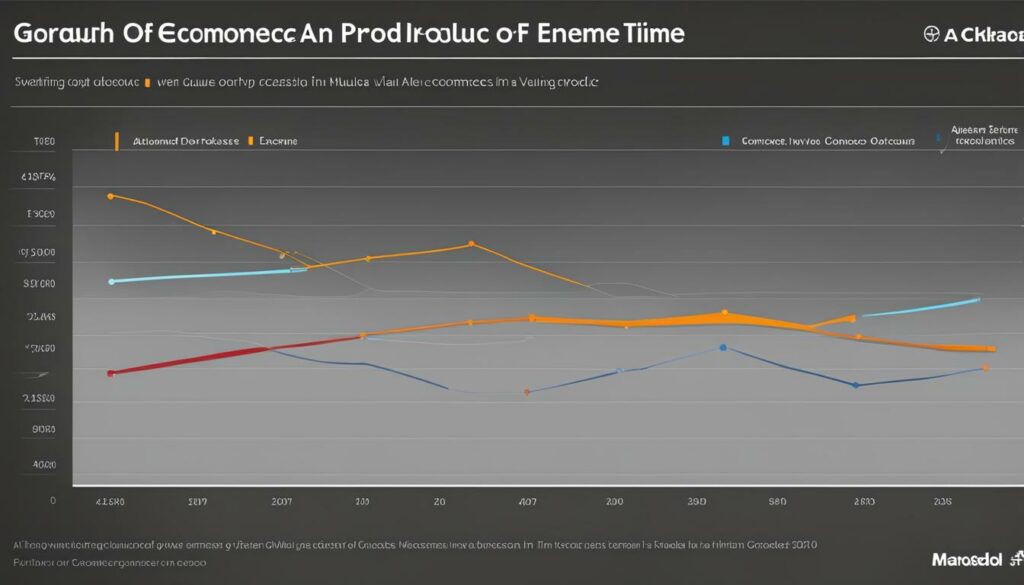Depreciation is an essential concept in ecommerce accounting that refers to the decrease in the value of assets over time. As an online business owner, understanding depreciation is crucial for accurately assessing financial health, claiming tax deductions, and managing fixed asset accounting.
Depreciation occurs because assets, such as equipment, vehicles, or technology, gradually lose value due to wear and tear, obsolescence, or other factors. By recognizing this decrease in value, businesses can account for the true cost of their assets over their useful lives.
There are several depreciation methods available, including:
- Straight-line depreciation: This method evenly spreads out the depreciation expense over the useful life of the asset.
- Declining balance method: This method accelerates depreciation in the early years and decreases it in later years.
- Units of production method: This method bases depreciation on the actual usage or production of the asset.
- Double declining balance: This method applies a higher depreciation rate to the asset’s net book value each year.
Accumulated depreciation is another important term in fixed asset accounting. It represents the total depreciation recorded for an asset over its lifetime and helps businesses track the depreciated value of their assets accurately.
Key Takeaways
- Depreciation is the decrease in the value of assets over time, which is a critical aspect of ecommerce accounting.
- Understanding depreciation allows businesses to claim tax deductions and accurately assess their financial health.
- Straight-line depreciation, declining balance method, units of production method, and double declining balance are common depreciation methods.
- Accumulated depreciation represents the total depreciation recorded for an asset and plays a significant role in fixed asset accounting.
- Knowing the different depreciation methods and understanding accumulated depreciation can help ecommerce businesses optimize their financial performance.
The Definition of Depreciation in Ecommerce
Depreciation in ecommerce refers to the gradual decrease in the value of assets used in online business operations. It is an accounting method that spreads out the cost of an asset over its useful life. By recognizing depreciation, businesses can accurately track the true cost of their assets and evaluate their financial position.
Depreciation also allows for tax deductions, helping businesses save money. As the value of assets decreases over time, businesses can deduct a portion of the asset’s cost from their taxable income, reducing their overall tax liability. This can free up resources for other business needs and improve cash flow.
Furthermore, depreciation is a vital aspect of fixed asset accounting. Properly accounting for depreciation ensures that businesses have an accurate representation of their asset’s value on their balance sheet. This helps in making informed financial decisions and provides stakeholders with a clear understanding of the company’s asset portfolio.
Overall, by recognizing depreciation in ecommerce, businesses can accurately track the cost of their assets, take advantage of tax deductions, and maintain proper fixed asset accounting.
Calculating Depreciation in Ecommerce
When it comes to depreciation in ecommerce, there are several methods available for calculating the decrease in asset value over time. These methods allow businesses to accurately track and account for depreciation expenses, providing valuable insights into their financial health. The most common depreciation methods used in ecommerce are:
- Straight-line depreciation: This method evenly spreads out the depreciation expense over the useful life of the asset. It is a straightforward and easy-to-calculate method, making it popular among ecommerce businesses. By using this method, businesses can maintain a consistent and predictable depreciation rate, allowing for better financial planning and budgeting.
- Declining balance method: Unlike straight-line depreciation, the declining balance method accelerates depreciation in the early years and decreases it in later years. This method allows ecommerce businesses to account for assets that lose value rapidly in the initial stages of their useful life. It is particularly useful for assets such as technology equipment that may become obsolete quickly.
- Units of production method: This method bases depreciation on the actual usage or production of the asset. It is a dynamic approach to calculating depreciation, as the expense is linked to the asset’s productivity. Ecommerce businesses can benefit from this method when their assets’ value is directly tied to their production output or usage.
Each depreciation method has its advantages and is suited for different types of assets. By carefully selecting the most appropriate method for their specific circumstances, ecommerce businesses can accurately calculate depreciation and effectively manage their financial resources.

The Benefits of Choosing the Right Depreciation Method
Choosing the right depreciation method is essential for accurate financial reporting and decision-making. Let’s take a closer look at the benefits of each method:
| Depreciation Method | Benefits |
|---|---|
| Straight-line depreciation | Consistent and predictable depreciation expenses. Easy to understand and calculate. |
| Declining balance method | Reflects the rapid decrease in value of certain assets. Useful for assets that become obsolete quickly. |
| Units of production method | Accurately links depreciation to asset usage or production output. Aligns expenses with revenue generation. |
By selecting the most suitable method, ecommerce businesses can effectively manage their assets’ depreciation and make informed decisions regarding their financial future.
The Importance of Depreciation in Ecommerce
Depreciation plays a crucial role in ecommerce. It allows businesses to accurately assess their financial health by factoring in the decrease in asset values over time. By recognizing and accounting for depreciation, businesses can better understand their asset turnover and determine the true value of their company. Additionally, depreciation enables businesses to claim tax deductions, reducing their tax liability and improving their overall financial performance.
When it comes to running a successful ecommerce business, understanding and managing depreciation is essential. Assets, such as equipment, vehicles, and technology, are valuable resources that contribute to the smooth operation and growth of a business. However, these assets depreciate over time, meaning their value decreases. Recognizing and accounting for depreciation is crucial for businesses to ensure accurate financial reporting and make informed decisions.
“Depreciation allows businesses to accurately assess their financial health by factoring in the decrease in asset values over time.”
One of the key benefits of depreciation is its impact on asset turnover. Asset turnover refers to the efficiency with which a business utilizes its assets to generate revenue. By considering the decrease in asset values over time, businesses can determine the true value of their assets and calculate their asset turnover ratio. This information is valuable for assessing the effectiveness of asset utilization, identifying areas for improvement, and making strategic decisions to optimize operational efficiency.
Furthermore, depreciation offers tax benefits to ecommerce businesses. When assets are depreciated, the business becomes eligible for tax deductions. These deductions reduce the taxable income, resulting in a lower tax liability. By maximizing available tax deductions through proper depreciation accounting, businesses can improve their financial performance and allocate resources more efficiently.
It’s important to note that depreciation is not only relevant for tangible assets but also for intangible assets like patents, trademarks, and copyrights. Even though these assets may not physically depreciate, they still have a limited useful life and incur costs over time. Properly accounting for the depreciation of intangible assets is crucial for accurate financial reporting and tax planning.
“Depreciation enables businesses to claim tax deductions, reducing their tax liability and improving their overall financial performance.”
In summary, depreciation is an essential concept in ecommerce. By recognizing and accounting for the decrease in asset values over time, businesses can accurately assess their financial health, improve asset turnover, and make informed decisions. Additionally, depreciation provides tax benefits that can significantly impact the financial performance of ecommerce businesses. Properly managing depreciation is crucial for maintaining financial stability and optimizing operational efficiency.

Key Points:
- Depreciation allows businesses to assess their financial health accurately.
- Recognizing and accounting for depreciation helps determine the true value of assets and calculate asset turnover.
- Depreciation enables businesses to claim tax deductions and reduce tax liability.
- Proper depreciation accounting is crucial for tangible and intangible assets.
- Depreciation plays a critical role in maintaining financial stability and optimizing operational efficiency in ecommerce.
Strategies to Improve Depreciation in Ecommerce
Businesses in ecommerce can adopt several strategies to optimize the management of depreciation and mitigate asset value decrease. By implementing these strategies, businesses can improve their financial position and ensure long-term sustainability.
Choosing the Right Depreciation Method
One key strategy is to select the most suitable depreciation method based on the nature and characteristics of the assets. Different depreciation methods, such as straight-line depreciation, declining balance method, and units of production method, offer unique advantages for various types of assets. For assets with a consistent lifespan, straight-line depreciation evenly spreads out the depreciation expense over time. On the other hand, assets that rapidly lose value may benefit from the declining balance method, which accelerates depreciation in the early years. By carefully considering the specific characteristics of each asset, businesses can optimize their depreciation methods and effectively manage asset value decrease.
Regular Maintenance and Upgrades
Another strategy to improve depreciation in ecommerce is by investing in regular maintenance and upgrades of assets. By maintaining assets in optimal condition and addressing any performance or functional issues promptly, businesses can slow down the depreciation rate. This not only extends the useful life of the assets but also enhances their value over time. Regular maintenance and proactive upgrades demonstrate a commitment to preserving asset quality, which can positively impact customer perception and brand reputation.
Effective Asset Tracking and Management
An often overlooked strategy is implementing robust asset tracking and management systems. Accurate and up-to-date records of asset acquisition, utilization, maintenance, and disposal provide valuable insights into the depreciation process. By effectively tracking and managing assets, businesses can identify patterns, analyze trends, and make informed decisions to optimize depreciation methods. Additionally, thorough documentation helps businesses comply with financial reporting standards and ensures accurate calculation of asset depreciation.
Collaboration with Financial Experts
Seeking professional advice from financial experts can be instrumental in improving depreciation strategies in ecommerce. Experienced accountants or financial consultants can provide valuable guidance on selecting appropriate depreciation methods, optimizing asset management systems, and maximizing tax deductions. Collaborating with experts ensures businesses are well-informed about the latest trends, regulations, and best practices in depreciation, enabling them to make informed decisions and enhance their financial performance.
| Strategies to Improve Depreciation in Ecommerce | Benefits |
|---|---|
| Choosing the Right Depreciation Method | Optimizes depreciation calculation based on asset characteristics. |
| Regular Maintenance and Upgrades | Slows down asset depreciation and enhances asset value. |
| Effective Asset Tracking and Management | Provides insights for accurate depreciation calculation and compliance. |
| Collaboration with Financial Experts | Access to professional advice and industry best practices. |
By implementing these strategies, businesses can minimize asset value decrease, optimize their depreciation methods, and ensure better financial health in the competitive ecommerce landscape. Effective depreciation management is an integral part of strategic financial planning and can contribute significantly to the long-term success of an ecommerce business.

Depreciation in Ecommerce and Customer Behavior
Depreciation in ecommerce can have a significant impact on customer behavior. When customers perceive that a business has assets that are depreciating in value, it can raise concerns about the quality and value of the products or services being offered. This perception may lead customers to question whether they should continue doing business with the company or explore other options.
Businesses need to be mindful of how depreciation affects customers’ perception and take measures to mitigate any negative impacts. One effective strategy is to invest in regular maintenance and upgrades to ensure that assets maintain their appearance and functionality. By proactively addressing customer concerns related to depreciation, businesses can maintain a positive brand image and instill confidence in their offerings.
Moreover, customer trust and satisfaction are crucial for a company’s financial health. By prioritizing asset maintenance and minimizing the visibility of depreciation, businesses can signal their commitment to providing high-quality products and services. This, in turn, can attract more customers and contribute to long-term success.
In conclusion, understanding the relationship between depreciation and customer behavior is essential for ecommerce businesses. By actively managing depreciation and implementing strategies to address customer concerns, businesses can demonstrate their commitment to quality, enhance customer trust, and maintain a strong financial position.
FAQ
What is depreciation in ecommerce?
Depreciation in ecommerce refers to the gradual decrease in the value of assets used in online business operations. It is an accounting method that spreads out the cost of an asset over its useful life.
Why is depreciation important in ecommerce?
Depreciation allows businesses to accurately assess their financial health by factoring in the decrease in asset values over time. It also enables businesses to claim tax deductions, reducing their tax liability and improving their overall financial performance.
What are the different methods for calculating depreciation?
The most common methods for calculating depreciation in ecommerce include straight-line depreciation, declining balance method, and units of production method.
How does depreciation affect customer behavior in ecommerce?
When customers perceive that a business has depreciated assets, they may question the quality or value of the products or services being offered. Businesses need to address customer concerns related to depreciation and develop strategies to mitigate any negative impacts.
How can businesses improve depreciation in ecommerce?
Businesses can implement strategies such as choosing the appropriate depreciation method based on the nature of the assets and regularly maintaining and upgrading assets to slow down depreciation.
